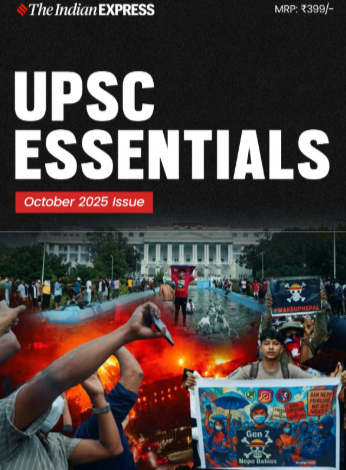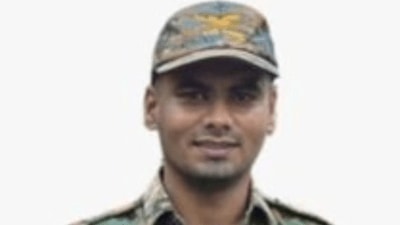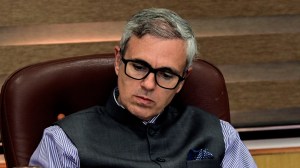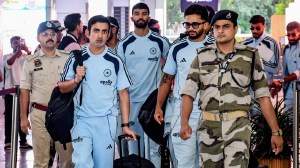Priya Kumari Shukla is a Senior Copy Editor in the Indian Express (digital). She contributes to the UPSC Section of Indian Express (digital) and started niche initiatives such as UPSC Key, UPSC Ethics Simplified, and The 360° UPSC Debate. The UPSC Key aims to assist students and aspirants in their preparation for the Civil Services and other competitive examinations. It provides valuable guidance on effective strategies for reading and comprehending newspaper content. The 360° UPSC Debate tackles a topic from all perspectives after sorting through various publications. The chosen framework for the discussion is structured in a manner that encompasses both the arguments in favour and against the topic, ensuring comprehensive coverage of many perspectives. Prior to her involvement with the Indian Express, she had affiliations with a non-governmental organisation (NGO) as well as several coaching and edutech enterprises. In her prior professional experience, she was responsible for creating and refining material in various domains, including article composition and voiceover video production. She has written in-house books on many subjects, including modern India, ancient Indian history, internal security, international relations, and the Indian economy. She has more than eight years of expertise in the field of content writing. Priya holds a Master's degree in Electronic Science from the University of Pune as well as an Executive Programme in Public Policy and Management (EPPPM) from the esteemed Indian Institute of Management Calcutta, widely recognised as one of the most prestigious business schools in India. She is also an alumni of Jamia Milia Islamia University Residential Coaching Academy (RCA). Priya has made diligent efforts to engage in research endeavours, acquiring the necessary skills to effectively examine and synthesise facts and empirical evidence prior to presenting their perspective. Priya demonstrates a strong passion for reading, particularly in the genres of classical Hindi, English, Maithili, and Marathi novels and novellas. Additionally, she possessed the distinction of being a cricket player at the national level. Qualification, Degrees / other achievements: Master's degree in Electronic Science from University of Pune and Executive Programme in Public Policy and Management (EPPPM) from Indian Institute of Management Calcutta ... Read More
UPSC Key—14 August, 2023: Bharatiya Nyaya Sanhita 2023, India-Taiwan and Hawaii Wildfires
Exclusive for Subscribers from Monday to Friday: Have you ever thought about how Golden Crescent and Golden Triangle regions are relevant to the UPSC Exam? What significance do topics like the Indian Penal Code, Fertilizer Consumption in India, Retributive Justice and Restorative Justice have for both the preliminary and main exams? You can learn more by reading the Indian Express UPSC Key for August 14, 2023.
 UPSC Key August 2023: Here's what you should be reading from the August 14, 2023 edition of The Indian Express
UPSC Key August 2023: Here's what you should be reading from the August 14, 2023 edition of The Indian Express
Important topics and their relevance in UPSC CSE exam for August 14, 2023. If you missed the August 11, 2023 UPSC CSE exam key from the Indian Express, read it here
FRONT PAGE
Airlifting troops to tanks, artillery to radar: No let-up in IAF operations in eastern Ladakh
Syllabus:
Preliminary Examination: Current events of national and international importance.
Mains Examination: General Studies II: India and its neighbourhood- relations.
Key Points to Ponder:
• What’s the ongoing story- The Indian Air Force (IAF) has airlifted nearly 70,000 Army troops and heavy platforms like tanks, artillery guns and BMPs weighing over 9,000 tonnes as part of efforts towards enhancing the overall operational preparedness in eastern Ladakh since India and China entered a military standoff along the Line of Actual Control (LAC) three years ago, latest estimates show.
• What latest estimates showed about India and China border?
• For Your Information-According to officials, the massive transport operations launched by the IAF in the immediate aftermath of the Galwan Valley clashes led to induction of multiple divisions of Army troops — estimated to be over 68,000 — as well as strategic airlift over 300 BMPs, around 100 tanks and artillery guns totalling a load over 9,000 tonnes.
• What in the Galwan?
• What is the importance of this region for India?
• How significant are they for the military?
• India-China Relations during Nehruvian Era-Know in detail
• The 1962 India-China War-Know the background
• India-China Border Dispute- Know the background
• For Your Information-India and China have held 18 rounds of military talks and 27 meetings of the Working Mechanism for Consultation and Coordination on India-China Border Affairs (WMCC) so far. The talks have led to disengagement of troops at the post 2020 friction points with the creation of buffer zones, but legacy issues such as Depsang Plains and Demchok continue to fester, leading to limited or no patrolling by Indian troops at these points
• What is Line of Actual Control?
• China’s aggressive attitude towards Indo-China Border and What impact can it have on India-China relations?
• Changing dynamics in Indo-China relationships-what are the points of irritation in recent scenario?
• Jingoism and not pragmatism nowadays dominate bilateral relations of India with her Neighbours -do you think so? Attest your opinion with few examples
• Resolving the Sino-Indian imbroglio-How?
Other Important Articles Covering the same topic:
📍Explained: In India-China border dispute, strategic significance of Hot Springs, Gogra Post
📍India-China Galwan faceoff: How serious is the situation, what happens next?
It takes a village: In Punjab’s Malwa, local committees take up drug fight
Syllabus:
Preliminary Examination: Current events of national and international importance
Mains Examination:
• General Studies II: Issues relating to development and management of Social Sector/Services relating to Health, Education, Human Resources.
• General Studies III: Role of external state and non-state actors in creating challenges to internal security.
Key Points to Ponder:
• What’s the ongoing story- From a shopkeeper keeping an eye on “suspicious persons” entering his village and a former heroin addict teaching kabaddi to locals, to a man posting videos of his confrontation with suspected peddlers to a youth who died confronting an alleged dealer — residents of villages in southern Malwa are leaving no stone unturned to contain drug menace in their area.
• ‘Traditionally India has been seen as sandwiched between the Death (Golden) Crescent and Death (Golden) Triangle’-Discuss
• Golden Crescent and Golden Triangle regions-what are they?
• Map work-‘Golden Crescent’ and ‘Golden Triangle’
• Global drug Trade and Impact on India-Know in detail
• What is heroin and methamphetamine and how they works in Human Body?
• How the NDPS Act defines Drugs?
• The Narcotic Drugs and Psychotropic Substances (Amendment) Ordinance, 2021 and Narcotic Drugs and Psychotropic Substances Act, 1985
• What are Essential Narcotic Drugs (ENDs)?
• Narcotics Control Bureau- Role and mandate
• What is Cannabis or Marijuana?
• What is the main psychoactive component of Charas and Ganja?
• What is Tetrahydrocannabinol and how it works in Human Body?
• In India, how does the Narcotic Drugs and Psychotropic Substances Act, 1985 define cannabis, Charas and Ganja?
• United Nations Convention Against Illicit Traffic in Narcotic Drugs and Psychotropic Substances and India-Know in detail
Other Important Articles Covering the same topic:
📍Narco War: These figures show why Udta Punjab matters
📍MHA informs Rajya Sabha: Punjab among top three states with most drug case FIRs; UP leads list
THE EDITORIAL PAGE
Syllabus:
Preliminary Examination: Indian Polity and Governance-Constitution, Political System, Panchayati Raj, Public Policy, Rights Issues, etc.
Mains Examination: General Studies II: Structure, organization and functioning of the Executive and the Judiciary-Ministries and Departments of the Government; pressure groups and formal/informal associations and their role in the Polity.
Key Points to Ponder:
• What’s the ongoing story-Bibek Debroy , Aditya Sinha Writes: The Bharatiya Nagarik Suraksha Sanhita, 2023, proposes several important changes to the Criminal Procedure Code (CrPC) which guides the criminal justice system. From technological changes to allow trials via video-conferencing to allowing handcuffs for the arrest of persons in some cases including murder, rape, and counterfeit currency — these are some of the main changes proposed in the CrPC.
• What is Bharatiya Nyaya Sanhita 2023?
• “Soon Section 420 of the Indian Penal Code, 1860 will be replaced with Section 316 of Bharatiya Nyaya Sanhita, 2023 (BNS)”-What you know about section 420?
• What exactly Government has proposed in Bharatiya Nyaya Sanhita 2023?
• What is criminal justice system in detail?
• What is Indian criminal justice system?
• Quick Recall-In a complete overhaul of colonial-era criminal laws, Union Home Minister Amit Shah on Friday introduced three Bills in Lok Sabha to replace the Indian Penal Code (IPC), 1860; The Code of Criminal Procedure, 1973 (originally enacted in 1898); and the Indian Evidence Act, 1872. The Bills — Bharatiya Nyaya Sanhita (BNS), 2023, to replace the IPC; Bharatiya Nagarik Suraksha Sanhita (BNSS), 2023, for CrPC; and Bharatiya Sakshya (BS) Bill, 2023, for the Indian Evidence Act — were referred to a standing committee. From a new provision on mob lynching, punishable by seven years imprisonment or life imprisonment or death penalty; to enabling speedy justice through video trials, e-filing of FIRs; expanding the definition of sedition; bringing corruption, terrorism and organised crime under the penal laws; introducing community service and solitary confinement as new forms of punishment; holding trials in the absence of an accused; and expanding the scope of offence against women pertaining to sexual intercourse by employing “deceitful means” — the new Bills provide for substantive changes in criminal jurisprudence.
• The Indian Penal Code-Know its history
• But why this recent changes?
• Retributive Justice and Restorative Justice-Compare
• What is Retributive Justice?
• “Every saint has a past and every sinner a future”-Decode the quote
• “Objective of justice should be reformative and not retributive”-Comment
• What is Criminal Justice System in India?
• What are the different stages of the criminal justice system?
• Why there is a need for Reforms in criminal justice system?
• Which committee is related to reforms in Criminal Justice System of India (CJSI)?
• Know Malimath Committee Report in detail
Other Important Articles Covering the same topic:
📍THE BHARATIYA NYAYA SANHITA, 2023
📍From holding trials on video to community service as punishment: Centre’s overhaul of criminal laws
📍Key provisions and processes proposed in Bill to replace CrPC
📍Expert Explains: What does the proposed legislation to overhaul criminal justice system mean?
📍From holding trials on video to community service as punishment: Centre’s overhaul of criminal laws
📍How the Indian Penal Code came into existence under British colonial rule
THE IDEAS PAGE
Delhi and Taipei, just friends
Syllabus:
Preliminary Examination: Current events of national and international importance
Mains Examination: General Studies II: Bilateral, regional and global groupings and agreements involving India and/or affecting India’s Interest
Key Points to Ponder:
• What’s the ongoing story- The recent arrival in Taipei of three retired Indian service chiefs has led to media speculation about the message that Delhi was sending, about “India’s options” in case of a military operation by Beijing to reunite Taiwan with the People’s Republic of China (PRC). This speculation was lent a sharp edge by American analyst Ashley Tellis’s recent comment that India’s vulnerability to Chinese domination, “guarantee(s) that New Delhi will never involve itself in any US confrontation with Beijing that does not directly threaten its own security.”
• Map Work-Republic of China or RoC (the official designation of Taiwan and its associated islands)
• For Your Information-The RoC lies a mere 112 miles across the Taiwan Strait from its giant neighbour, the PRC, which represents an omnipresent threat of military invasion and forcible integration. Beijing has denuded the RoC’s international support by bullying or bribing many nations into withdrawing formal recognition. The RoC is today, recognised by only 13 countries, including the Vatican and a handful of small Pacific islands. The Republic of China was established in 1912, after the downfall of the Qing Dynasty, and the assumption of rule by the Kuomintang (KMT) party as the legitimate government. In 1927, a civil war broke out between the KMT and the Chinese Communist Party (CCP) but the 1937 Japanese invasion led to a truce and the two parties formed a united front to fight the common enemy. Resumed after World War II, the civil war ended in 1949 with a Communist victory. The CCP under Mao Zedong took control of mainland China, and the defeated RoC government, headed by Generalissimo (a military rank above Field Marshal) Chiang Kai-shek fled to the offshore island of Taiwan. Post-WW II, the RoC, having emerged as one of the victorious Allies, was granted a seat on the UN Security Council. However, with the Communists staking their claim as the legitimate government of China, the UN, in 1971, expelled the RoC and gave its seat to PRC. Even as the US switched its recognition from RoC to the PRC, Beijing declared that it would use force if the RoC ever declared independence. This brings us to the interesting US policy of “strategic ambiguity” with respect to the RoC. After their 1972 détente, Nixon and Mao issued the joint “Shanghai Communique,” which acknowledged that “there is but one China and that Taiwan is a part of it.” Thus, Washington’s “one China” policy helped the US sit on the fence while maintaining good relations with both the PRC and RoC. Seven years later, in 1979, the US Congress passed the Taiwan Relations Act, which approved unofficial relations between the US and Taiwan and committed the US to providing Taiwan with “defensive weapons”. So far, the US has, through diplomacy and military posturing, conveyed a message of deterrence to China without actually committing itself to military intervention in the defence of Taiwan.
• India’s relationship with the RoC-Know the details
• Taiwan and China-Know the Background
• China-Taiwan tensions-Know in detail
• What is the ‘One China’ policy?
• Why China claims Taiwan as its own territory?
• India-Taiwan Bilateral Relations-Know in detail
• Does India Recognise Taiwan as a country?
• For Your Information- India recognised the PRC in 1950 and for years stood by a “one China” policy, without reciprocity from the Chinese about J&K and Arunachal. Though India-Taiwan relations have remained low-key because of apprehensions about China’s adverse reaction, the two countries established trade and cultural ties in 1995 — diplomatic representatives were posted in New Delhi and Taipei. India-China relations plummeted after the 2020 Galwan incident, which compelled India to counter-mobilise in Ladakh. While the Sino-Pakistan military nexus will ensure that India has its hands full on land and at sea, the compact but robust Indian Navy remains fully committed to safeguarding India’s interests across the Indo-Pacific. Consequently, there is as much chance of India involving itself militarily in a Taiwan Strait crisis as there is of US paratroopers landing in Ladakh. Given a shared and ever-increasing threat from the PRC, there is a significant mutuality of interests between India and the RoC. Apart from the obvious benefits to be gained from the regular exchange of military intelligence, Taiwan’s unique position as the world leader in semiconductors makes it a desirable friend and partner.
• What is “One country, two systems”?
• How Hong Kong is different from Taiwan?
• What is Taiwan’s New Southbound Policy?
• Do You Know-While India follows the One-China policy, it has an office in Taipei to carry out diplomatic functions. It operates under the name of India-Taipei Association, which is headed by a senior Indian diplomat. The India-Taipei Association (ITA) in Taiwan and Taipei Economic and Cultural Center (TECC) in New Delhi were established as de-facto Indian and Taiwanese embassies in each other’s capitals in 1995. Both sides have maintained the focus of ties on commerce, culture and education. The profile of the ties, now in their third decade, has been deliberately kept low, owing to the sensitivities of China. The bilateral trade between India and Taiwan is on an upswing. The volume of trade increased from USD 2 billion in 2006 to USD 8.9 billion in 2021.
Other Important Articles Covering the same topic:
📍Explained: The China-Taiwan tussle
THE WORLD
Hawaii wildfires declared deadliest in US in over 100 years; toll 93 now
Syllabus:
Preliminary Examination: General issues on Environmental ecology, Bio-diversity and Climate Change – that do not require subject specialization.
Mains Examination: General Studies III: Conservation, environmental pollution and degradation, environmental impact assessment.
Key Points to Ponder:
• What’s the ongoing story- The death toll from the Maui wildfires in Hawaii reached 93 on Saturday, according to the Maui County website, making it the deadliest US wildfire in more than a century, with the total likely to rise as cadaver dogs sift through the ruins of Lahaina. The scale of the damage came into sharper focus four days after a fast-moving blaze levelled the historic resort town, obliterating buildings and melting cars. The cost to rebuild Lahaina was estimated at $5.5 billion, according to the Federal Emergency Management Agency (FEMA), with more than 2,200 structures damaged or destroyed and more than 2,100 acres (850 hectares) burned.
• What is happening in Hawaii?
• Map Work-Hawaii
• For Your Information-The extent of the fires likely had to do with the weather conditions prevailing in the state this summer. According to Associated Press, dry weather and strong winds from a passing hurricane were major contributors to the blaze. It also highlighted Maui County hazard mitigation plan, last updated in 2020, and that it had identified Lahaina and other West Maui communities as having frequent wildfire ignitions and a large number of buildings were at risk of wildfire damage. Additionally, West Maui was also identified as having populations who were more vulnerable to such conditions. For example, the region also has the highest rate of non-English speakers. “This may limit the population’s ability to receive, understand and take expedient action during hazard events,” the plan noted.
• What is the historical significance of Maui and Lahaina?
• Why have the fires in Hawaii been so devastating?
• Do You Know-Lahaina was the one-time capital of the former Hawaiian kingdom from 1820 to 1845. The town was once the royal residence of King Kamehameha, who unified Hawaii under a single kingdom by defeating the other islands’ chiefs. Kings and queens are buried in the graveyard of the 200-year-old stone Wainee Church. Later named Waiola, the church that once sat up to 200 people was photographed apparently engulfed in flames this week. Much of the historic Front Street is also believed to be damaged. It was home to restaurants, bars, stores and what is believed to be the United States’ largest banyan, a fig tree with aerial roots that grow out of branches and eventually reach the soil and become new trunks. It stretched to more than 60 feet (18 meters) and was anchored by multiple trunks, as is the case with older banyan trees. The tree was a sapling when it was planted in 1873, as a gift shipped from missionaries in India. For Native Hawaiians, the town is a connection to their ancestors. Lahainaluna High School was where royalty and chiefs were educated, and also where Kamehameha and his Council of Chiefs drafted the first Declaration of Rights of the People and the Constitution for the Hawaiian Kingdom. The US annexed the kingdom in 1898.
• What is the connection between weather and fires?
• Does Hawaii have a history of forest fires?
• Why exactly are environmentalists worried?
• And has World as a whole seen rising incidents of forest fires?
Other Important Articles Covering the same topic:
📍Hawaii wildfires leave at least 93 people dead: What is happening?
📍Global warming and strong winds: What led to the wildfires of Hawaii
EXPLAINED
What is Parliament’s Privileges Committee, how it works
Syllabus:
Preliminary Examination: Indian Polity and Governance-Constitution, Political System, Panchayati Raj, Public Policy, Rights Issues, etc.
Mains Examination: General Studies II: Parliament and State legislatures—structure, functioning, conduct of business, powers & privileges and issues arising out of these.
Key Points to Ponder:
• What’s the ongoing story- On August 10, Prime Minister Narendra Modi’s government defeated the opposition’s no-confidence motion in the Lok Sabha. After that, Prahlad Joshi, Minister for Parliamentary Affairs, stated that Congress party MP Adhir Ranjan Chowdhury repeatedly interrupted the PM and other ministers and made baseless charges in his speeches. He then moved a motion that the House refer the “gross, deliberate and repeated misconduct” of Chowdhury to its Privileges Committee for further examination. It added that till the committee submitted its report, the House should suspend the Congress leader from its proceedings. Lok Sabha adopted the motion with a voice vote. Earlier this year, Rajya Sabha used a similar mechanism to direct its committee of privileges to look into the actions of Congress MP Rajani Ashokrao Patil for making a video recording of an unauthorised part of the upper House proceedings.
• What are parliamentary privileges?
• The parliamentary privileges do not extend to the president who is also an integral part of the Parliament-True or False?
• Parliamentary privileges can be classified into two broad categories-What are those two categories?
• For Your Information-Parliament and its Members (MPs) have certain rights and immunities that enable them to function effectively in their legislative roles. These are called parliamentary privileges. When the Constitution framers made our founding document, it provided that parliamentary privileges would be those specified in a law made by Parliament. And until the national legislature made such a law, privileges would be those enjoyed by the House of Commons, the lower House of the United Kingdom’s Parliament. In 1978, Parliament deleted the reference to the House of Commons by a constitutional amendment. And it is yet to make any law specifying these privileges. Parliamentary privileges are, therefore, a mix of provisions in the Constitution, statutes, House procedures and conventions. For example, the Constitution specifies that MPs have freedom of speech and immunity from judicial proceedings against anything they say or votes they cast in Parliament. Also, the Code of Civil Procedure protects them from arrest and detention under civil cases during a parliamentary session, and for a specified period before it begins and after it ends. Parliamentary rules specify that authorities should immediately inform the Speaker of Lok Sabha and Chairman of Rajya Sabha about MPs’ arrests, releases and convictions. Accompanying the question of privilege is the concept of Contempt of the House. An authority on parliamentary functioning, the book Erskine May defines contempt as “…any act or omission which obstructs or impedes either House of Parliament in the performance of its functions, or which obstructs or impedes any member or officer of such House in the discharge of his duty, or which has a tendency, directly or indirectly, to produce such results may be treated as a contempt even though there is no precedent of the offence.”
• Collective Privileges vs Individual Privileges-Compare and Contrast
• How does Parliament act on breach of privilege?
• What kinds of cases come to the committee?
• What does the committee decide in breach of privilege cases against MPs?
• ‘Breach of privilege’ and ‘contempt of the House’-are both same?
Other Important Articles Covering the same topic:
📍Lok Sabha suspends Congress’s Adhir Ranjan Chowdhury: How Privileges Committee works
Previous year UPSC Prelims Question Covering similar theme:
📍With reference to the Parliament of India, which of the following Parliamentary Committees scrutinizes and reports to the House whether the powers to make regulations, rules, sub-rules, by-laws, etc. conferred by the Constitution or delegated by the Parliament are being properly exercised by the Executive within the scope of such delegation ? (UPSC GS1, 2018)
(a) Committee on Government Assurances
(b) Committee on Subordinate Legislation
(c) Rules Committee
(d) Business Advisory Committee
📍Which one of the following is the largest Committee of the Parliament? (UPSC GS1, 2014)
(a) The Committee on Public Accounts
(b) The Committee on Estimates
(c) The Committee on Public Undertakings
(d) The Committee on Petitions
Syllabus:
Preliminary Examination: Economic and Social Development
Mains Examination: General Studies III: Issues related to direct and indirect farm subsidies
Key Points to Ponder:
• What’s the ongoing story- Late last month, Prime Minister Narendra Modi officially launched ‘Urea Gold’ fertiliser. Developed by the state-owned Rashtriya Chemicals and Fertilizers Ltd (RCF), it is basically urea fortified with sulphur. Normal urea contains 46% of a single plant nutrient: Nitrogen or N. Urea Gold has 37% N plus 17% sulphur or S and aims at two things. The first is to deliver S along with N. Indian soils are deficient in S, which oilseeds and pulses – the country is significantly import-dependent in both – particularly require.
• What is gold urea?
• Do You Know-Urea is India’s most widely used fertiliser, with its consumption/sales rising from 26.7 million tonnes (mt) to 35.7 mt between 2009-10 and 2022-23. The Modi government’s measures, such as mandatory coating of all urea with neem oil and reducing the size of bags from 50 to 45 kg, enabled a slight dip after 2013-14 till 2017-18. But the subsequent period has shown renewed uptrend. There are two concerns over rising urea consumption. The first is imports, which accounted for 7.6 mt out of the total 35.7 mt sold last fiscal. Even with regard to domestically-manufactured urea, the feedstock used – natural gas – is mostly imported. India’s nearly 36-mt annual consumption of urea is today next only to China’s 51 mt, with the latter’s production largely coal-based. The second concern is NUE. Barely 35% of the N applied through urea in India is actually utilised by crops to produce harvested yields. The balance 65% N is unavailable to the plants, much of it “lost” through release into the atmosphere as ammonia gas or leaching below the ground after conversion into nitrate. Declining NUE, from an estimated 48% in the early 1960s, has resulted in farmers applying more and more fertiliser for the same yield.
• Why excessive use of urea and now di-ammonium phosphate or DAP?
• What harm can excessive use of urea and now di-ammonium phosphate, or DAP, do to a farmer?
• For Your Information-High government subsidies are behind the low pricing, and high sales, of these two fertilisers. And the resulting nutrient imbalance owing to their use — disproportionate to other, more expensive fertilisers — could have implications for soil health, ultimately affecting crop yields. The use of nitrogen (N), phosphorous (P) and potassium (K) in the country has over the last few years sharply deviated from the ideal NPK use ratio of 4:2:1.
• Do You Know-The ideal NPK use ratio for the country is 4:2:1, whereas it was 6.5:2.8:1 in 2020-21 and 7.7:3.1:1 in 2021-22. In the recent 2022 kharif season, the ratio got further distorted to 12.8:5.1:1.
• Fertilizer Consumption in India-Know in detail
• What is Fertilizer?
• Primary (Macro) Nutrients and Secondary (Micro) Nutrients in Fertiliser-Know the difference
• Know more about Fertiliser Sector in India and Related Policies
• Fertilizer comes under Union List, State List or Concurrent List?
• know the basics of Fertiliser Subsidy
• Subsidy Mechanism in the form of Direct Benefit Transfer (DBT)-know more in detail
• What is the fertiliser requirement of a typical farmer?
• How much subsidy does a farmer really get per acre?
• What is Di-ammonium phosphate (DAP)?
• NPK in Fertilisers-Have you heard of ‘NPK’? What is NPK and Its Ideal Ratio in Fertilizers?
Other Important Articles Covering the same topic:
📍Explained: How fertiliser subsidy works
📍Explained: Why has the Modi government increased subsidy on DAP?
For any queries and feedback, contact priya.shukla@indianexpress.com
The Indian Express UPSC Hub is now on Telegram. Click here to join our channel and stay updated with the latest Updates.
UPSC Magazine

Read UPSC Magazine







- 01
- 02
- 03
- 04
- 05

























